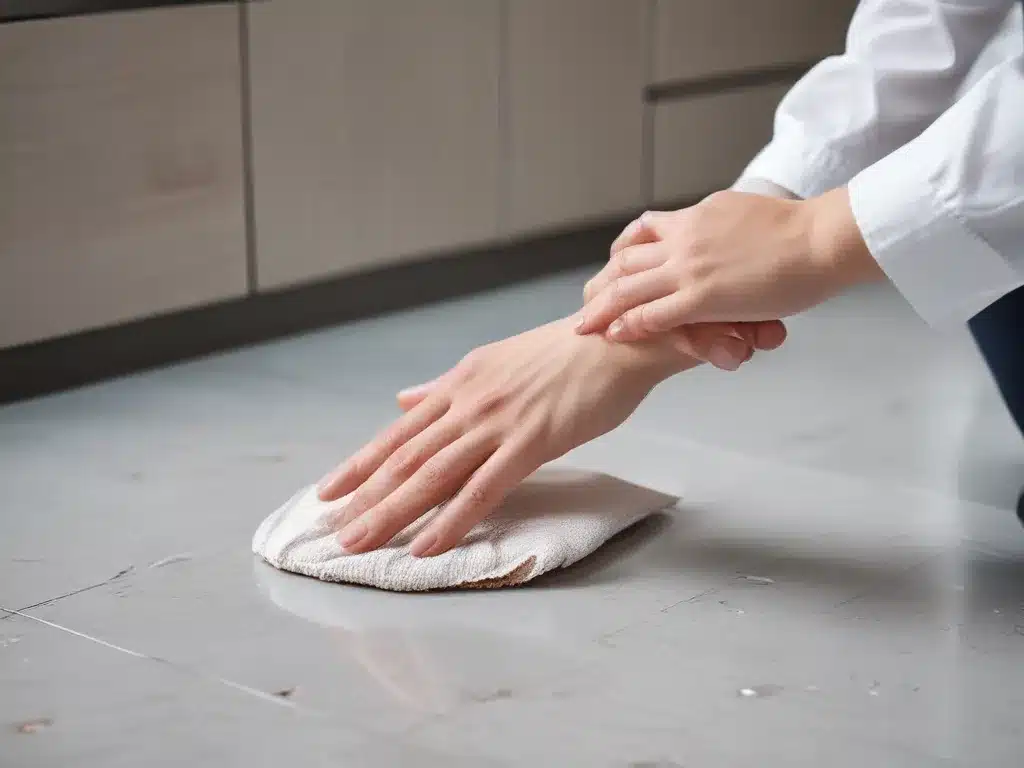Introduction
As the COVID-19 pandemic has highlighted the importance of proper disinfection practices, the task of sanitizing surfaces and high-touch areas has become a crucial aspect of maintaining a safe and healthy environment. In this comprehensive guide, I will delve into the intricacies of disinfecting high-touch areas, providing you with practical tips, expert insights, and essential knowledge to help you keep your surroundings clean and germ-free.
Understanding High-Touch Areas
What are high-touch areas? High-touch areas refer to surfaces that are frequently contacted by multiple individuals, increasing the risk of cross-contamination and the spread of harmful microorganisms. These areas can include doorknobs, light switches, countertops, desks, keyboards, and shared equipment. Proper sanitization of these surfaces is crucial to preventing the transmission of illnesses and maintaining a hygienic environment.
The Importance of Disinfecting High-Touch Areas
Why is disinfecting high-touch areas so important? The answer lies in the potential health risks associated with neglecting these areas. Harmful pathogens, such as viruses, bacteria, and fungi, can survive on surfaces for extended periods, posing a significant threat to our well-being. By regularly disinfecting high-touch areas, we can effectively eliminate these microorganisms and minimize the risk of contracting illnesses.
Choosing the Right Disinfectant
When it comes to disinfecting high-touch areas, selecting the appropriate disinfectant is crucial. The effectiveness of a disinfectant depends on several factors, including its active ingredients, concentration, and the target microorganisms. Here are some common disinfectants and their properties:
| Disinfectant | Active Ingredient | Effective Against |
|---|---|---|
| Bleach solution | Sodium hypochlorite | Bacteria, viruses, and fungi |
| Alcohol-based solutions | Ethanol or isopropyl alcohol | Bacteria and viruses |
| Quaternary ammonium compounds | Cationic surfactants | Bacteria and viruses |
| Hydrogen peroxide | Hydrogen peroxide | Bacteria, viruses, and fungi |
It’s important to note that different disinfectants have varying dwell times (the amount of time the disinfectant needs to remain wet on a surface to effectively kill microorganisms). Always follow the manufacturer’s instructions for proper usage and contact time.
Step-by-Step Guide to Disinfecting High-Touch Areas
To effectively disinfect high-touch areas, follow these steps:
-
Prepare the Disinfectant Solution: Carefully read and follow the manufacturer’s instructions for mixing the disinfectant solution. Wear appropriate personal protective equipment (PPE), such as gloves and eye protection, when handling disinfectants.
-
Clean the Surface: Before disinfecting, it’s essential to remove any visible dirt, grime, or debris from the surface. Use a clean cloth or paper towel dampened with water or a mild detergent solution to wipe down the area.
-
Apply the Disinfectant: Once the surface is clean, apply the disinfectant solution liberally. Ensure that the entire area is covered, paying special attention to crevices and hard-to-reach spots.
-
Allow Proper Contact Time: Leave the disinfectant solution on the surface for the recommended contact time specified by the manufacturer. This dwell time is crucial for the disinfectant to effectively kill the microorganisms.
-
Wipe or Rinse the Surface: After the recommended contact time has elapsed, wipe the surface with a clean, damp cloth or paper towel to remove any remaining disinfectant solution. For surfaces that come into direct contact with food or potable water, rinse thoroughly with clean water to remove any residual disinfectant.
-
Let the Surface Dry: Allow the surface to air dry completely before using it again. This step ensures that any remaining moisture does not promote the growth of microorganisms.
Frequency and Scheduling
How often should you disinfect high-touch areas? The frequency of disinfection depends on several factors, such as the type of environment, the level of foot traffic, and the potential risk of contamination. In general, it’s recommended to disinfect high-touch areas daily or at least several times a week.
Establishing a routine and scheduling regular disinfection can help ensure consistency and maintain a safe and hygienic environment. Consider creating a checklist or calendar to track and monitor your disinfection efforts.
Additional Considerations
While disinfecting high-touch areas is crucial, it’s important to remember that it’s just one aspect of a comprehensive cleaning and sanitization protocol. Here are some additional considerations:
- Hand Hygiene: Encourage frequent handwashing or the use of alcohol-based hand sanitizers, especially after touching high-touch areas or before handling food or consuming beverages.
- Personal Protective Equipment (PPE): When disinfecting, wear appropriate PPE, such as gloves and eye protection, to protect yourself from exposure to harmful chemicals or microorganisms.
- Ventilation: Ensure proper ventilation in the area being disinfected to prevent the buildup of harmful fumes or vapors.
- Proper Storage and Disposal: Store disinfectants in a secure, well-ventilated area, and follow proper disposal guidelines for used solutions and PPE.
Conclusion
Disinfecting high-touch areas is an essential practice for maintaining a safe and healthy environment. By following the steps outlined in this guide, choosing the appropriate disinfectant, and establishing a consistent routine, you can effectively eliminate harmful microorganisms and reduce the risk of illness transmission. Remember, a clean and sanitized environment not only protects your health but also instills confidence in those who visit or work in the space.







